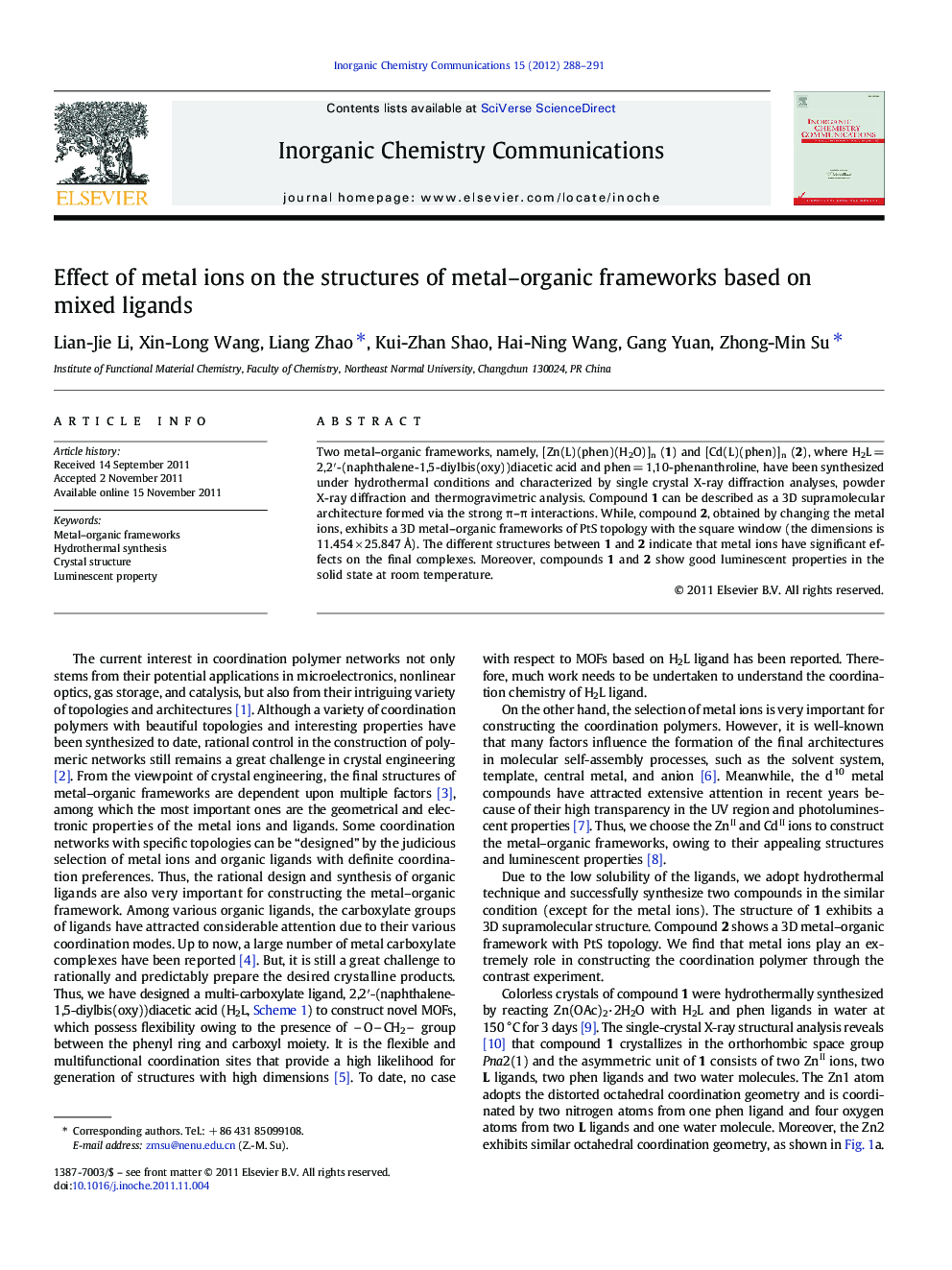| Article ID | Journal | Published Year | Pages | File Type |
|---|---|---|---|---|
| 1304048 | Inorganic Chemistry Communications | 2012 | 4 Pages |
Two metal–organic frameworks, namely, [Zn(L)(phen)(H2O)]n (1) and [Cd(L)(phen)]n (2), where H2L = 2,2′-(naphthalene-1,5-diylbis(oxy))diacetic acid and phen = 1,10-phenanthroline, have been synthesized under hydrothermal conditions and characterized by single crystal X-ray diffraction analyses, powder X-ray diffraction and thermogravimetric analysis. Compound 1 can be described as a 3D supramolecular architecture formed via the strong π–π interactions. While, compound 2, obtained by changing the metal ions, exhibits a 3D metal–organic frameworks of PtS topology with the square window (the dimensions is 11.454 × 25.847 Å). The different structures between 1 and 2 indicate that metal ions have significant effects on the final complexes. Moreover, compounds 1 and 2 show good luminescent properties in the solid state at room temperature.
Graphical abstractCompound 1 shows a 1D chain structure. Compound 2 exhibits the 3D metal-organic frameworks of PtS topology. The different structures between 1 and 2 indicate that metal ions have significant effects on the final complexes.Figure optionsDownload full-size imageDownload as PowerPoint slideHighlights► Compound 1 shows a 3D supramolecular architecture formed via the strong π–π interactions. ► Compound 2 exhibits a 3D network of PtS topology. ► The different structures of 1 and 2 indicate that metal ions have significant effects on the final complexes.
